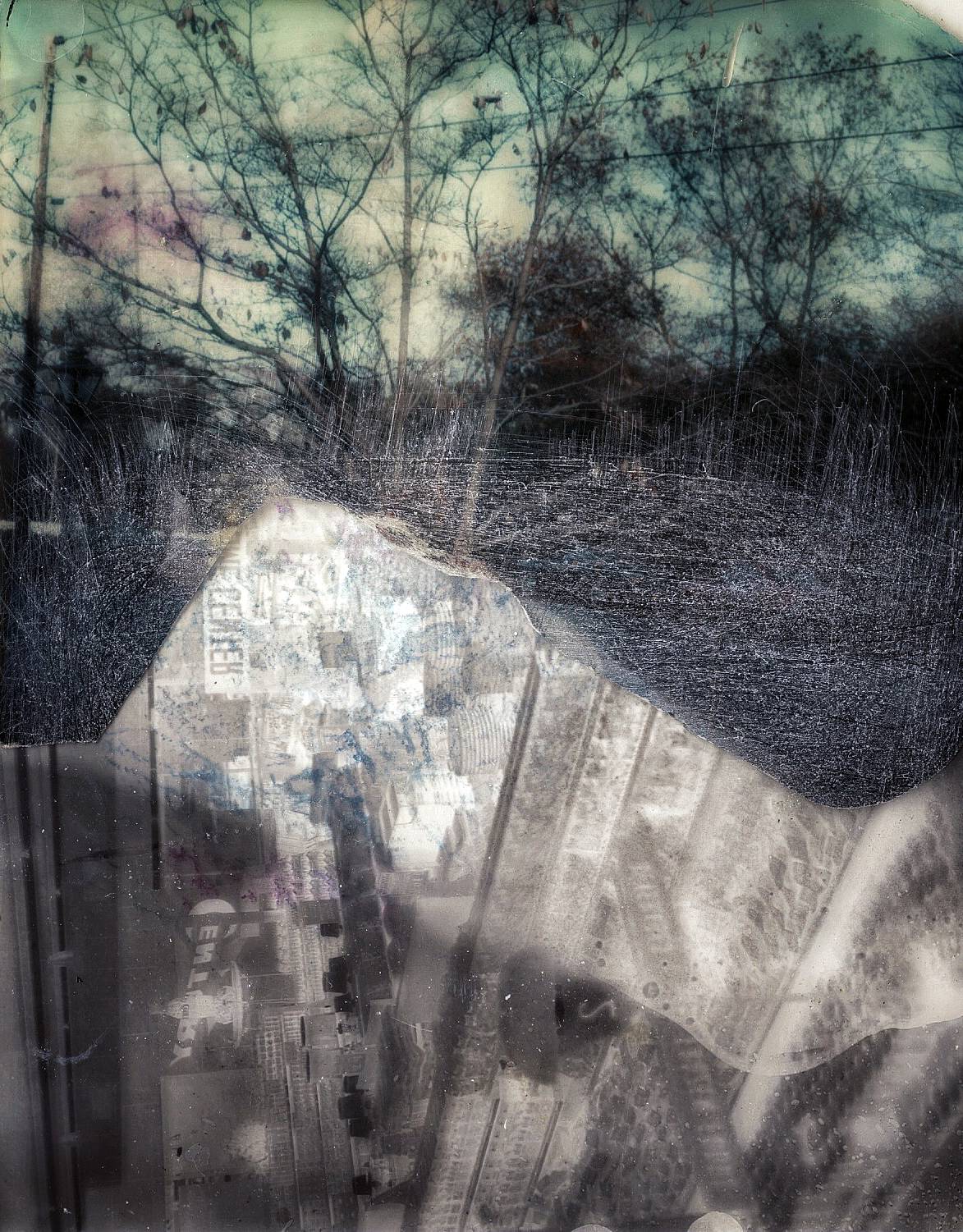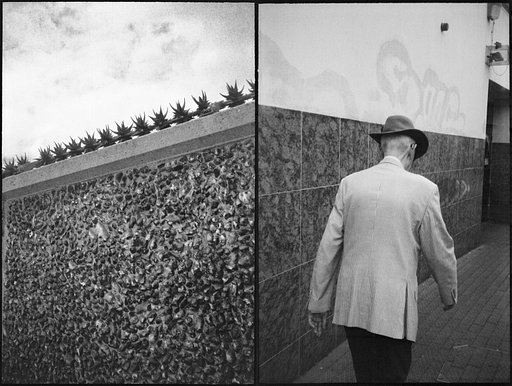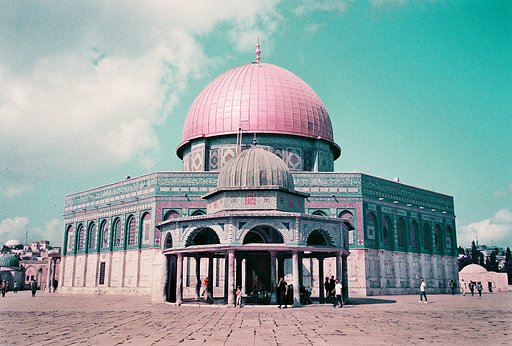Poetry and Polaroid Film Soups – the Lyrical Work of Patty Paine
6 12 Share TweetAs in a labyrinth, in life we walk along various corridors, following a path. The quest for realization never stops. Until the labyrinth is untangled under the gentle brush of the inspiring muse.
We are pleased to host in our magazine the work of poet, photographer and mixed media artist Patty Paine.

Welcome to the Lomography Magazine! Please introduce yourself to the readers and tell us a bit about your background with photography.
My mother was from Korea, and she met my father while he was serving in Seoul during the Korean War. My mother and sister followed my father to Trenton, NJ, where I was born four years later. My mother remarried when I was four, and we moved to Vernon, NJ, where I lived until I graduated from high school and joined the Marine Corps.
After a stint in the Marine Corps, followed by many years of meandering, at 29, I became a full-time student at Virginia Commonwealth University in Richmond, VA. I got a BA in History and an MFA design in Creative Writing. In 2005, I moved to Doha, Qatar, to teach at VCUarts Qatar, a branch campus of VCU. I intended to stay for a year or two.
Eighteen years later, I'm still at VCUQ and am Director of the Liberal Arts & Sciences program. VCUarts Qatar is an art and design university, and being immersed in all things visual inspired me to explore photography. Photography emerged as a means for artistic exploration and self-expression, and I found myself drawn to storytelling through the lens of a camera. My husband, Law Alsobrook, teaches graphic design at VCUQ, and he and I run Diode Editions, an independent press, and diode poetry journal, an online poetry journal.
On your Instagram page, you have a collection of your work made with polaroid manipulation and experimental techniques. Can you tell us about your work with this medium?
A friend gave me a Polaroid 600 in 1981, and I was instantly fascinated by the alchemy it performed. I was captivated by the tactile experience of Polaroid photography: the whine of the charging circuit, the chemical fumes, and holding the photo and watching the image emerge. I love how taking a Polaroid photo is a dance between intention and chance and how the whole process is infused with mystery and wonder.
When I first started experimenting with Polaroids, I altered them through roller manipulation, emulsion lifting, and scratching techniques. I was drawn to the work of Kevin Garrison, Lucas Samaras, and Hazel Davis. On Instagram, pol_aroidz is a huge inspiration. I was already doing film souping and decided to try to "soup" Polaroids. I use various techniques, from soaking the Polaroids in water, often boiling water, to soaking them in various chemicals.
I sometimes use dyes and inks at various stages in the process. I manipulate the emulsion while it's still within the frame to create folds and creases that are more intentional and that work with the photos. It's an inexact and volatile process that often creates unexpected results. As someone who struggles with needing to be in control, this volatility is humbling and instructive.
Can you share with us your favorite experimental recipe for film souping your instant photos?
- Boiling Water
- A quarter cup of salt
- A cup of blueberries
- A quarter cup of lemon juice
Soak overnight. Rinse well. I love the blue and yellow tint and the dots of light this soup can create.
You also work with mixed media. What is the inspiration behind your work with this technique?
I've always been drawn to collecting transient items like vintage letters, postcards, and magazines, and working with mixed media allows me to use things I've collected to hopefully create unique and visually engaging work. I like the diverse palette that mixed media creates, and I find it enables me to tell more intricate and layered stories. I am fascinated by how integrating photography with other media can blur and conflate the lines between real and imagined.
I think this also allows the quotidian to move into the surreal in a way that can enact how close the quotidian is to the surreal in our everyday lives. I've been experimenting with incorporating photography and ephemera from my own life. I am finding that when language seems beyond reach, turning to mixed media can be a means of expression while facilitating language formation.
With the Negative_Recovery_Project you also collect old film. Can you tell us more about it?
I started collecting old negatives about 20 years ago. I was drawn to images that had become separated from their histories and that, for whatever reason, were abandoned. I'm drawn to lost images because my family history is so opaque. My father abandoned the family when I was two, and I know almost nothing about him. Due to mental and physical illness, my mother could never reliably narrate her past. From the urge to recover memories, any memories, came the urge to collect the past, any past.
My first impulse at wrecking came from recovering; perhaps it's my way of saying that even with no roots, something can grow. I started wrecking negatives by experimenting with "souping" negatives after they had been developed. I then began incorporating Polaroids, mostly my images but sometimes vintage Polaroids, into the wrecking process. Recently, I started using the wrecked images in collages and am enjoying the challenge of extending the life of these images, even as they become less and less recognizable.
What do you look for in a picture when you find old photos?
I'm especially drawn to photos that sit between quotidian and surreal. I know the photos may evoke nostalgia for followers of negative_recovery, but I'm wary of nostalgia. While nostalgia can provide a sense of connection to personal history, it also carries the potential to be regressive. While nostalgia can be a stirring reminder of the past, it may impede moving forward.
One of my favorite photos is of a living room in the US in the 1960s or '70s. On the paneled wall is a rack of eight rifles. They are pointed in the direction of an older woman, who is lying, uncomfortably, it seems, on a chaise. This photo has a cinematic and affecting quality that draws me in, and it also captures the US's fetishization of guns. For me, something about the rifles hung with pride in what should be a peaceful domestic scene captures the US's fervent and catastrophic obsession with guns.
You mentioned that you're also the editor in chief of Diode Editions, an independent press that curates works of poetry. How much does your literary work influence your photography and how are they interconnected?
I enjoy creating stories and poems in response to some of the images I find. I was so drawn to responding to photography through poetry that my press, Diode Editions, released an anthology of poems in response to images on the Negative_Recovery_Project and Wrecked.Archives sites. It's called Beyond the Frame, and over 45 poets selected images and wrote poems in response to the images.
Paintings have long been a source of inspiration for poets, evoking emotions and experiences and encouraging experimentation with language and form, so I thought, why not old photos?
The anthology was informed by "Meditations on a Triptych" by Allan Sekula. Sekula constructed and analyzed three found photos, and I was struck by his description of how a found photograph "reappears in an almost archaeological light." Sekula likened photos to artifacts where "something is being memorialized.”
Through close observation and critique, Sekula interrogated the imaginative and material landscape of the photos to attempt to answer these questions and others, like "What meanings were once constructed here? What ideas and desires directed this project? Who spoke, who listened, who spoke with a voice not their own?" He hoped to "give what was once familiar an exemplary strangeness."
I think my poetry and visual work are interrelated and transactional. My approach to language, imagery, and metaphor probably influences the way I hope to create visual narratives. I feel as though the art forms enhance each other, offering a multi-dimensional and interconnected expression.
I think writing and visual work stem from deep observation and this can translate into a photographer's eye for interesting subjects and compositions. Of the writing genres, poetry is also the most visual in its use of shape and space. The visual layout of a poem on a page, including line breaks, white space, stanza formation, and indentation, can add to its meaning and impact.
What does the future hold for you?
I hope to retire in three years and be able to spend much more time pursuing writing and making.
You can follow Patty's work on Instagram.
written by eparrino on 2023-09-18 #experimental #polaroid-600 #photographer #poet #color-shift #destruction #film-soup #mixed-media-artist
























6 Comments